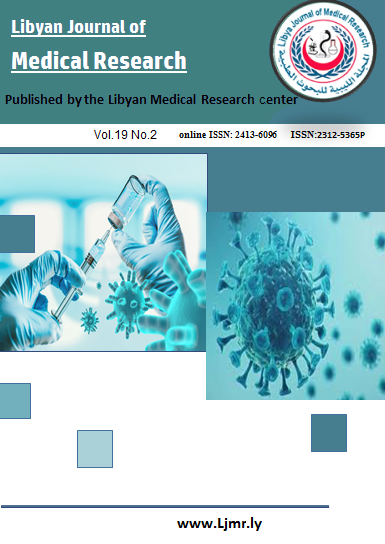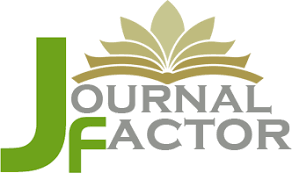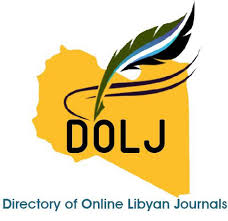Failure of Antibiotic Therapy in a Chronic Carious Tooth with Purulent Discharge: Case Report of Successful Outcome Post-Extraction
DOI:
https://doi.org/10.54361/LJMR.19.2.26Keywords:
Chronic, dental,, infection, Odontogenic, cutaneous, sinus, tract,, Antibiotic,, Antibiotic, Mandibular, first molar, Dental abscess, MisdiagnosisAbstract
Background: Chronic dental infections, especially those associated with carious teeth and persistent purulent discharge, pose a significant therapeutic challenge, particularly when antibiotic treatment fails. The emergence of antimicrobial resistance (AMR) and complicating factors such as biofilm formation and limited drug penetration contribute to treatment failure and persistent infection. Case Presentation: This report describes a 17-year-old female presenting with a cutaneous sinus tract on the lower border of the mandible, unresponsive to multiple antibiotic regimens. Initial misdiagnosis led to delayed appropriate care. Clinical and radiographic evaluation revealed a severely carious mandibular first molar (36) with associated periapical radiolucencies and soft tissue changes consistent with a chronic dental abscess. Tooth extraction was performed, and purulent material was drained from both the socket and sinus tract. Postoperative recovery was uneventful, and complete resolution of symptoms was observed within three weeks. Discussion: Odontogenic cutaneous sinus tracts are rare and frequently misdiagnosed as dermatologic conditions. This case highlights the limitations of antibiotic therapy in chronic dental infections and underscores the importance of early dental evaluation and imaging in persistent cutaneous lesions. Panoramic radiography proved critical for diagnosis. Surgical intervention, including tooth extraction, remains a definitive treatment when conservative measures fail. Conclusion: Dental infections should be considered in the differential diagnosis of unexplained cutaneous facial lesions. Early recognition and appropriate surgical management are key to preventing complications and addressing antibiotic resistance in odontogenic infections.
Downloads
References
1. Klein EY, Van Boeckel TP, Martinez EM, Pant S, Gandra S, Levin SA, et al. Fighting the antimicrobial resistance global emergency. J Dent Res. 2025;104(1):10–7.
2. Alqutaibi AY, Alshammari AF, Alshammari FN, Aldosari AM, Alkhurayji H, Alshahrani F, et al. Dental infection and resistance-global health consequences. Dentistry J. 2019;7(1):22.
3. O’Neill J. Antimicrobial resistance: impacts, challenges, and future prospects. Sci Rep. 2024;14(1):1234.
4. Halling C, Poeschl J, Layer F, Boddin K, Fuchs F, Makarewicz O, et al. Antimicrobial resistance and the spectrum of pathogens in dental infections: a German surveillance study. Front Microbiol. 2021;12:676108.
5. Suda KJ, Calip GS, Zhou J, Rowan S, Gross AE, Hershow RC, et al. Antibiotics in dental practice: how justified are we? J Antimicrob Chemother. 2020;75(7):1921–8.
6. Kansal R, Kaushik A, Talwar S, Chaudhary S, Nawal R. Non-surgical management of cutaneous sinus tract of dental origin: a report of three cases. J Evol Med Dent Sci. 2013;2(46):9042–7.
7. Chkoura A, Elwady W, Taleb B. Surgical management of a cutaneous sinus tract: a case report and review of the literature. J Contemp Dent Pract. 2010;11(5):49–55.
8. Tidwell E, Jenkins JD, Ellis CD, Hutson B, Cederberg RA. Cutaneous odontogenic sinus tract to the chin: a case report. Int Endod J. 1997;30(5):352–5.
9. McWalter GM, Alexander JB, del Rio CE, Knott JW. Cutaneous sinus tracts of dental etiology. Oral Surg Oral Med Oral Pathol. 1988;66(5):608–14.
10. Tidwell E, Jenkins JD, Ellis CD, Hutson B, Cederberg RA. Cutaneous odontogenic sinus tract to the chin: a case report. Int Endod J. 1997;30(5):352–5.
11. Pasternak JR, Phelan JA, Cerniglia CE. Cutaneous draining sinus tract of dental origin: report of a case. J Am Acad Dermatol. 2009;61(3):533–4.
12. Gupta M, Das D, Kapur R, Gupta R. Role of dentist in diagnosing cutaneous facial sinus. J Indian Soc Pedod Prev Dent. 2011;29(4):334–6.
13. Chan CP, Jeng JH, Chang SH, Chen CC, Lin CJ, Lin CP. Cutaneous sinus tracts of dental origin: clinical review of 37 cases. J Formos Med Assoc. 1998;97(9):633–7.
14. Chhabra A, Chhabra N. Dental infection mimicking dermatological lesion: three case reports of cutaneous fistulae and sinus tracts on face. Indian Dermatol Online J. 2018;9(6):441–4.
15. K C K, Kalwar AG, Upadhyaha C, Chaurasia N, Shakya M. Bilateral orocutaneous fistula secondary to pericoronal infection of mandibular third molars: a rare case report. Clin Case Rep. 2025;13(1):e70017.
16. Arslan ZB, Demir H, Berker Yıldız D, Yaşar F. Diagnostic accuracy of panoramic radiography and ultrasonography in detecting periapical lesions using periapical radiography as a gold standard. Dentomaxillofac Radiol. 2020;49(6):20190290.
17. Molander B. Panoramic radiography in dental diagnostics. Swed Dent J Suppl. 1996;119:1–26.
Downloads
Published
Issue
Section
License
Copyright (c) 2025 Yousef S.Z. Salem, Mahmoud A. Aloriby, Enas Shaafi, Hoda Mohamed Mostafa, Salha A. ALobidy, Ahmed S Mikael, Aya Alhassi, Rasha. J .Abraheem (Author)

This work is licensed under a Creative Commons Attribution-NonCommercial-NoDerivatives 4.0 International License.
Open Access Policy
Libyan journal of medical Research (LJMR).is an open journal, therefore there are no fees required for downloading any publication from the journal website by authors, readers, and institution.
The journal applies the license of CC BY (a Creative Commons Attribution 4.0 International license). This license allows authors to keep ownership f the copyright of their papers. But this license permits any user to download , print out, extract, reuse, archive, and distribute the article, so long as appropriate credit is given to the authors and the source of the work.
The license ensures that the article will be available as widely as possible and that the article can be included in any scientific archive.
Editorial Policy
The publication of an article in a peer reviewed journal is an essential model for Libyan journal of medical Research (LJMR). It is necessary to agree upon standards of expected ethical behavior for all parties involved in the act of publishing: the author, the journal editorial, the peer reviewer and the publisher.
Any manuscript or substantial parts of it, submitted to the journal must not be under consideration by any other journal. In general, the manuscript should not have already been published in any journal or other citable form, although it may have been deposited on a preprint server. Authors are required to ensure that no material submitted as part of a manuscript infringes existing copyrights, or the rights of a third party.
Authorship Policy
The manuscript authorship should be limited to those who have made a significant contribution and intellectual input to the research submitted to the journal, including design, performance, interpretation of the reported study, and writing the manuscript. All those who have made significant contributions should be listed as co-authors.
Others who have participated in certain substantive aspects of the manuscript but without intellectual input should only be recognized in the acknowledgements section of the manuscript. Also, one of the authors should be selected as the corresponding author to communicate with the journal and approve the final version of the manuscript for publication in the LJMR.
Peer-review Policy
- All the manuscripts submitted to LJMR will be subjected to the double-blinded peer-review process;
- The manuscript will be reviewed by two suitable experts in the respective subject area.
- Reports of all the reviewers will be considered while deciding on acceptance/revision or rejection of a manuscript.
- Editor-In-Chief will make the final decision, based on the reviewer’s comments.
- Editor-In-Chief can ask one or more advisory board members for their suggestions upon a manuscript, before making the final decision.
- Associate editor and review editors provide administrative support to maintain the integrity of the peer-review process.
- In case, authors challenge the editor’s negative decision with suitable arguments, the manuscript can be sent to one more reviewer and the final decision will be made based upon his recommendations.












